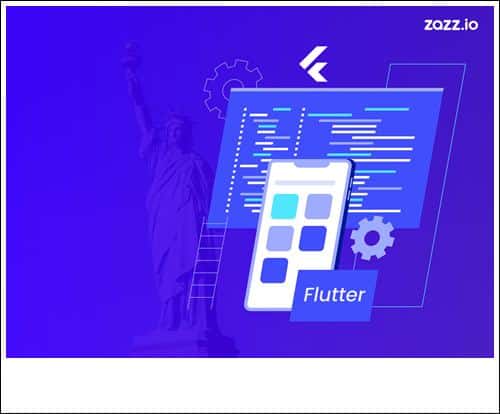
What is BLoC Architecture & Why Should You Use it With Your Flutter App?
The business-oriented world today is highly dependent on mobile applications. As a result, app owners are now looking for reliable & efficient architectures to power their applications. BLoC (Business Logic Component) architecture has become a popular choice for many developers due to its ability to provide a powerful yet scalable structure for developing applications. With the help of this architecture, it’s possible to create robust & maintainable apps with ease. In this blog, we’ll talk about why you should consider using the BLoC architecture in your Flutter app development.
BLoC Architecture Overview
BLoC stands for Business Logic Component & is an architecture pattern that separates the user interface layer from the business logic of your application. This means that all of the application logic can be written in one place, separate from the view layer. This makes it easier for the Flutter app development agency developers to make changes, debug, test & maintain app code.
The BLoC architecture model was first introduced with Google’s Flutter framework & has become popular due to its support for reactive programming paradigms, such as Streams & Futures. With this architecture, you can effortlessly develop complex user interfaces without needing to write complex business logic code.
How Does BLoC Work With Flutter Apps?
The BLoC architecture is based on three main components: the business logic layer, the view layer & a data provider. The business logic layer handles incoming data from the user interface (UI). It processes that data into a format that the UI can interact with.
The view layer consists of widgets, screens & presentation elements within the app. This is where all of your visual features will be implemented, such as fonts, colors & layouts.
The final component is the data provider which interacts with external APIs to fetch or push information from/to remote servers. This component allows the application to communicate with external services & provides an interface for receiving & sending data.
Advantages of Using BLoC With Your Flutter App
Here are the reasons why one should use BLoC in the Flutter app.
1. Easy to Maintain: As mentioned above, when using BLoC architecture, developers can easily maintain their codebase. This is because the components are loosely coupled & can be easily reused across different applications.
2. Testability: Testing applications built with BLoC architecture is much simpler than other architectures due to its modular structure. With this architecture, it’s possible to quickly create unit tests that cover a wide range of scenarios without having to do any complex setup or configuration.
3. Reuse Code: One of the main advantages of using BLoC architecture in Flutter development is the ability to share components between different applications without having to rewrite them from scratch each time. Using this method, code can be reused & changed as needed.
4. Simple to Understand: With the firsthand experience of BLoC architecture by the top developers of the software development company in the USA, we got to know that it is quite easy for developers to understand the codebase. This is because the components are logically separated & simple to identify which parts of the code belong to what functionality.
Integrating BLoC Into A Flutter App
The first step is to create the BLoC class, which will act as the bridge between UI components & business logic. The class should contain two streams – one for input values & one for output values – as well as configurable properties such as filters or validators.
Next, you’ll need to create an instance of the BLoC class in your main method. This will be used to initialize the stream controllers & connect them with your UI components. You must use disposers when you’re finished using a stream, otherwise, memory leaks may occur.
Finally, once all necessary classes have been initialized & connected, it’s time to start using BLoC in your Flutter app. This can be done by utilizing stream builders, which allow you to create reactive components that update whenever a new value is emitted from the streams. By combining this with other widgets like TextFields & Buttons, you can easily build powerful apps that respond to user input efficiently.
The Bottomline
We hope this blog has helped you better understand why BLoC should be used when developing your next Flutter application. BLoC Architecture is a powerful tool for developing apps with Flutter due to its separation of presentation logic & business logic. It allows developers to focus on the more essential features of an app instead of worrying about separating UI from functionality.
Moreover, you can partner with Zazz to create reliable applications that will stand out in the crowded mobile market with their well-structured code & efficient development process. So, don’t hesitate to take advantage of BLoC Architecture & reap the many benefits that come along with it.
Leave a Reply
You must be logged in to post a comment.